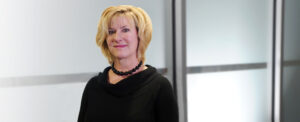Jane Schulte, Small Business Solutions Group
We all know that body language sometimes speaks more clearly about what we are thinking than our actual words. We know that crossing our arms while speaking (or listening) communicates that we may be closed off; rolling our eyes makes a statement that we don’t agree with what is being said; looking away may mean we are distracted or bored; and, avoiding eye contact when speaking may mean that we are not being forthright.
But there is also email body language which is the message you are conveying with the written word that may tell the recipient things about you or what you are thinking that you do not intend.
When dealing with people, remember you are not dealing with creatures of logic, but creatures of emotion. ~Dale Carnegie
Have you ever been the recipient of an email that leaves you scratching your head as to the intention behind the words? A lack of response which feels like you are being intentionally ignored? Or an email that was very short which felt as if the sender was being curt? We all have, and in defense of the sender, 99% of the time, they are well meaning and there are other reasons are behind the communication. Rushed for time, lack of proofreading or not responding because they do not have an answer (yet).
For Example
You receive an email from a client asking you a question to which you do not know the answer. You forward the email to someone else in your office who does have the answer and assume they will get back to you within a reasonable time. Meanwhile, the client waits for your response. Your colleague gets busy and does not get back to you until a week later and you then answer your client.
What is the client left with? The sense that you do not find them important or that you are too busy to handle their inquiry. In other words, they picture you with your arms folded or visualize you as stressed out with no time to handle the details. But that was not your intention at all!
How do we avoid this? When someone emails you with a question you cannot answer, reply immediately that you will need some time to obtain the answer which tells them 1) you received their email; and 2) you are on it! Blind copy yourself and then drag and drop the email into your Outlook ™ tasks or calendar for the next day so you can follow up in a timely manner.
Diligent follow up and follow through will set you apart from the crowd and communicates excellence. ~John Maxwell
Draft like you are writing a letter
Draft as the author and proofread as the recipient. An email should be drafted like a letter in that it should have a greeting and closing (i.e. Good morning/afternoon with the person’s name and a thank you or have a good day at the end). The body of your email should convey your message concisely so that no two minds can differ on what is being said or asked. If you draft the email with the reader in mind, you can avoid multiple clarifying exchanges, saving time and of course, showing your attention to detail and professionalism.
The worst distance between two people is misunderstanding. ~Anonymous
Also, it is a good idea to:
- Insert a meaningful subject line so the recipient knows the nature of your email
- Proofread and do not rely on spell check
- Attach the attachment before you draft the email, so you do not forget at the end
- Insert the recipient’s email address at the end to avoid accidently sending the email before it is complete
At the end of the day, we are all human
Your email body language may leave someone wondering if you are a kind and caring person ready to assist them or an unfriendly and burdened individual that they are bothering. Since we are all human beings dealing with other human beings, kindness always wins the day. The more words you can use in your email that reflect kindness and clear information, will not only put you in a favorable light, but also make people feel welcome and that they made the right choice by doing business with you.
Take a few extra minutes to put warm touches on your email to brighten someone else’s day. When you have clear, positive, and warm engagements in email, others will remember that and may even adopt some of your style so they can pass it on.
Use self-awareness, along with a critical inward lens, when drafting emails. Effective communication is at the heart of every good relationship both inside and outside of your business.
To learn more about effective communication and other Work Smart tools, contact Jane Schulte, 513.797.2855.




